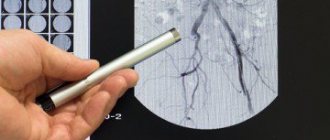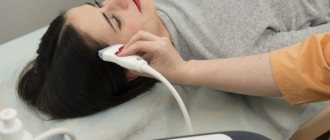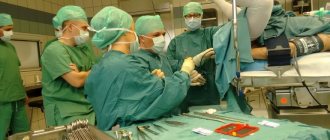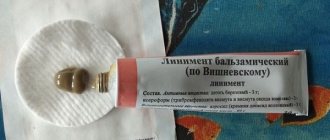The purpose of ligation is to stop blood circulation
Among the effective methods for removing hemorrhoids without surgery is ligation. The essence of the technique is to compress the vessels feeding the source of pathology with latex rings (compression effect). The procedure with a short rehabilitation period does not cause complications and is considered minimally invasive and atraumatic. For grade 1-3 hemorrhoids, this is an excellent solution to a health problem without surgery.
What is ligation
Hemorrhoids are accompanied by varicose veins in the rectum and anus. Due to increased blood pressure in the veins and capillaries, the walls of blood vessels become deformed, lose their tone and elasticity. If you limit blood access to the affected area, further progression of the disease can be stopped. This is what the latex ligation method is based on.
Ligation is a low-traumatic technique, the essence of which is to compress the affected veins and capillaries with special latex rings. This makes it possible to cut off the blood supply to the affected vessel, as a result of which tissue necrosis occurs and the cavernous formation is rejected by the body.
Latex rings for hemorrhoids are made from a special environmentally friendly material that does not cause allergies or tissue irritation. Due to this, the technique has a small number of contraindications and is used among men and women of various age categories.
Characteristics of the method
Ligation of hemorrhoids is a minimally invasive technique aimed at destroying cavernous tissue, during which latex rings are applied to the base of the hemorrhoid. As a result, blood circulation in the formation is disrupted, it is deprived of access to nutrients, and eventually dies, being independently rejected by the body. Within a month, the area of cavernous node rejection is lined with mucous membrane, through which you can see segments consisting of connective tissue remaining after amputation of the nodes. Thanks to these segments, hemorrhoidal veins are held in the rectum.
To apply latex rings, a special device is used - a ligator, developed in the mid-twentieth century, so the method has been used for more than 50 years. Ligation with latex rings is used both as an independent type of treatment and in combination with other low-operative techniques. Before the advent of radical excision of cavernous formations, their ligation was the main surgical technique for eliminating hemorrhoids.
Indications for the procedure
Ligation with latex rings is prescribed to patients in whom conservative treatment has not given the desired effect. The minimally invasive technique is used all over the world and has many advantages over surgical intervention. The technique is used for 2nd - 3rd degree pathology, when cavernous formations have clear boundaries. In some cases, surgery is prescribed for patients with stage 4 hemorrhoids. At the initial stage, it is not advisable to carry out the procedure.
Latex ligation is used exclusively for the internal form of the disease. For external hemorrhoids, the technique cannot be used, as there is a risk of complications. The procedure is performed in several stages; in one session, the doctor treats no more than 2 hemorrhoidal cones.
Main indications for using the technique:
- lack of effect of drug treatment;
- frequent relapses of pathology;
- constant deterioration of the condition;
- itching, burning, pain and other manifestations of hemorrhoids.
Pain from hemorrhoids and constant progression of the disease are the main indications for ligation
Important! Ligation of hemorrhoids with latex rings is recognized as one of the most effective methods of combating varicose veins in the rectum and anus.
Who is prescribed ligation?
Removal of hemorrhoids using latex rings is considered most effective for grade 1-2 internal hemorrhoids. Sometimes ligation is used in the later stages of pathology, but provided that the inflammation is moderate, all varicose veins are internal, and there are no external nodes.
The patient's gender and age do not matter, but the use of rings is advisable only if other methods are ineffective. In addition, ligation of hemorrhoids is the method of choice for removing hemorrhoids during pregnancy, since it is absolutely safe for both mother and baby.
It all depends on the stage of hemorrhoids. At the initial stage, conservative therapy is more reasonable. The first stage of rectal varicose veins is treated with ligation if inflammation occurs, causing severe pain with the threat of necrosis of tissue in the anal area. The operation takes minimal time, is painless, and the recovery period is two weeks.
According to patient reviews and the firm belief of doctors, it is the second stage, accompanied not just by pain, but by periodic bleeding from the anus, that is optimal for the operation of ligating internal hemorrhoids with hypoallergenic latex rings.
The third stage of hemorrhoids is accompanied by prolapse of nodes and the formation of external varicose formations, therefore the method of ligation of hemorrhoids is used here less frequently. But with a competent approach, the possibility of surgery remains.
For stage 4 hemorrhoids, ligation is ineffective; a classic surgical procedure, hemorrhoidectomy, is required.
Contraindications
Before prescribing a procedure for a patient, the doctor takes into account the main contraindications. These include:
We recommend reading: Alloying hemorrhoids with latex rings
- accompanying illnesses. Carrying out a session in the presence of an inflammatory process in the body jeopardizes the general health and life of the patient. Before performing ligation, you should get rid of other ailments;
- combined hemorrhoids. The operation is impossible in the absence of clear boundaries between cavernous formations;
- the last degree of pathology. At stage 4, most patients experience a strong inflammatory process, tissue swelling, and the addition of a bacterial infection. These features do not allow the use of the technique;
- first degree hemorrhoids are another contraindication. At this time, the disease responds well to drug treatment, so doctors do not prescribe the procedure. An exception is the transition of hemorrhoids from the first stage to the second;
- anal fissures. If a person has fissures in the anus, ligation can cause undesirable consequences, including blood poisoning;
- chronic proctitis, paraproctitis. To be able to carry out a minimally invasive technique, it is necessary to first treat the proctitis, only after that the use of ligation is allowed;
- oncological formations in the rectum. This applies to any tumors, both benign and malignant. It is believed that the use of rings will not give the desired effect, but may negatively affect the development of the tumor.
In addition, it is prohibited to perform the technique on patients with bleeding disorders, severe cardiovascular pathologies, and disorders of the central nervous system.
How is ligation performed?
To carry out the procedure, special latex rings are used, the internal diameter of which is approximately 1 mm. They are thrown onto the leg of the node using special ligators, which can be:
- Mechanical. When using them, the patient is asked to lie in a gynecological chair on his side or on his back. After this, the specialist inserts an anoscope into the rectum and fixes it in such a position that the protrusion is best visible. A mechanical ligator with a fixed latex ring is inserted into the lumen of the anoscope and the hemorrhoidal node is inserted into the head of the ligator using a soft clamp. One pull on the trigger of the device is enough for the ring to be thrown onto the leg of the assembly.
- Vacuum. Devices of this kind are equipped with a special suction, the task of which is to create negative pressure. Thanks to this, you can easily pull a knot of almost any configuration into the head of the ligator, including one that does not have a clearly defined leg. After the protrusion is immersed in the head of the device, a ring, or more often 2, is placed on its base, the pressure is equalized and the ligator is removed. It is recommended to use exactly 2 rings, especially when dealing with large nodes, to avoid their ruptures when straining during bowel movements.
Schematic representation of vacuum ligation
Immediately after the procedure, the doctor should ask whether the patient is experiencing pain. If pain is present, anesthetic injections are made into the tightened nodes to reduce their sensitivity.
Some of the main benefits of treating hemorrhoids with rings are:
- no need to go to hospital;
- The duration of the procedure usually does not exceed 15 minutes;
- no need for general anesthesia;
- short recovery period.
Preparation for the procedure
Treatment of hemorrhoids with latex rings begins with a series of special tests and refusal to take any medications that tend to worsen blood clotting, including NSAIDs. If laboratory tests do not reveal any contraindications to the procedure, the patient is recommended to undergo a cleansing enema in comfortable conditions immediately before performing the procedure.
Features of the postoperative period
Since ligation of hemorrhoids is, after all, a minimally invasive intervention, after its implementation it is necessary to undergo a certain rehabilitation so that the body can recover. Therefore, in the first days after the procedure you need to:
- eat exclusively liquid foods, for example, broths, kefir, yogurt, etc., to avoid the formation of feces at least in the first day;
- reduce physical activity to a minimum for 2 weeks;
- try to sit as little as possible;
- take long walks;
- take anticoagulants prescribed by your doctor;
- prevent constipation, that is, follow a plant-fermented milk diet.
Preparing for surgery
Treatment of hemorrhoids with latex rings requires certain preparation. The patient must undergo a comprehensive examination, which will identify possible contraindications. Immediately before the procedure, it is prohibited to take medications that increase blood clotting. These drugs include Aspirin, Vikasol, Phytomenadoin, and some non-steroidal anti-inflammatory drugs.
A few days before the procedure, the patient is advised to adjust his diet, avoid foods that cause constipation, gas formation, diarrhea and other digestive disorders. This tactic will help prevent complications after ligation. Alcoholic drinks, fatty foods, too salty, sour, smoked foods, carbonated water, strong tea, coffee are strictly prohibited.
Before performing ligation, the doctor must tell the patient about preparation for the procedure.
In the evening before the operation, the patient is advised to refuse to eat, undergo a cleansing enema, and carry out the necessary hygienic procedures. The next day the person needs to come to the hospital for the procedure.
Important! The cleansing enema should be performed carefully so as not to damage the hemorrhoids. Otherwise, inflammation and infection of the veins may develop, which will not allow ligation.
Preparation
Before the operation of ligation of hemorrhoids, each patient goes through several preparatory stages:
- examination according to the clinical minimum, including: OBC, OAM, biochemistry, ECG, FLG, RW, HIV testing, blood for viral hepatitis, anoscopy (digital examination), sigmoidoscopy, colonoscopy;
- following a weekly diet excluding fried, fatty, spicy, smoked, canned, salty foods, soda, and alcohol;
- in consultation with the doctor, discontinuation of anticoagulants a week before surgery;
- bowel cleansing: on the day of surgery in the morning - microenemas or laxative suppositories (Bisacodyl, Glycerin, Calciolax);
- hygiene measures.
The operation is performed on an outpatient basis or in a day hospital.
The essence of the operation
The technology consists of squeezing the base of the hemorrhoid with a latex ring, as a result of which the flow of blood to its body is stopped. After 10–14 days, the formation is rejected and removed from the rectum with feces. The operation is performed using a mechanical or vacuum ligator.
The procedure has several stages:
- An anoscope is inserted into the patient's rectum.
- The surgeon grabs the cavernous formation with a ligator and pulls it through a latex ring.
- The ring compresses the leg of the node, stopping the flow of blood to it.
After the procedure is completed, the patient can go home; the method does not require hospital stay or special rehabilitation. After 2 weeks, the hemorrhoidal lump disappears, leaving a small scar at the site of formation.
During the operation, the doctor asks the patient whether the ring is too tight and whether there is severe discomfort or pain. If any occur, the patient is given an anesthetic injection to reduce sensitivity in the area of the formations. 1–2 nodes are treated in one session, the next intervention is carried out no earlier than 1–2 months later.
Postoperative period
Reviews say that immediately after surgery, most people experience a false urge to defecate. Pain and discomfort in the anus are most pronounced in the first 6 hours after surgery and gradually disappear within 1.5 days. If there is severe pain, a suppository with an analgesic (lidocaine) should be inserted into the anus.
To reduce the risk of postoperative complications, the doctor will prescribe:
For several weeks after surgery, the patient should limit physical activity, follow a diet, and monitor bowel regularity. Defecation is possible no earlier than one day after doping.
Mechanical ligation
During the procedure, the patient is placed on a proctology chair in a lateral position, legs bent at the knees, pulled up to the chest. An anoscope is inserted into the anus, which helps to see the operated area. After this, a mechanical ligator with a latex ring is inserted into the anoscope. Using special forceps, the doctor grabs the cavernous formation and pulls it into the opening of the ligator. At the final stage, the surgeon presses the trigger, and the ring is dropped onto the leg of the node. The specialist makes sure that the ring tightly compresses the formation without trapping the surrounding tissue.
Mechanical ligator used to install latex rings
The method is convenient to use in the presence of hemorrhoidal cones with clear boundaries and a thin stalk. More often, surgery is prescribed for patients with internal hemorrhoids of the 2nd and 3rd degrees. The procedure lasts 10–15 minutes, no anesthesia is used.
Mechanical method
Such ligation of a hemorrhoid involves the patient being in a special chair, and the patient should lie on his side or on his back, with his legs pulled up to his stomach.
An anoscope is inserted into the anus so that the nodule is visible. Then a ligator is inserted into the device, and with its help the hemorrhoidal lump is captured.
An anoscope must be inserted into the anus so that the nodule can be examined. Then a ligator is inserted into the device, and with its help the hemorrhoidal lump is captured.
After pulling the nodule inward, the surgeon activates the ligator, which releases the latex ligature onto the base. The ring compresses the hemorrhoids (“leg”), while the surrounding areas of the mucous membrane remain intact.
Mechanical ligation is prescribed for well-defined hemorrhoidal nodules in which the base is clearly visible. The surgical intervention lasts no more than a quarter of an hour. The peculiarity of the procedure is that it is carried out only with the help of an assistant.
Using a Vacuum Ligator
A vacuum ligator, like a mechanical one, is inserted into the rectum through an anoscope. The surgeon clamps the opening of the ligator with his thumb, thereby creating the necessary negative pressure, and the cavernous formation is pulled into the device. Using a trigger mechanism, a latex ring is dropped onto the leg of the assembly. After this, the doctor removes the finger, the pressure is equalized. If this is not done, there is a risk of the hemorrhoidal lump coming off and causing bleeding.
The vacuum ligator is easy to use; the surgeon does not need an assistant to perform the procedure. The main advantage of the method is the ability to use it to remove cones with unclear boundaries in the early stages of pathology.
Important! Both types of ligation can cause discomfort in the patient in the first few days. Discomfort is relieved with painkillers as prescribed by a doctor.
Materials and methods used
When ligating cavernous nodes, latex rings are used, which are made from natural rubber. The sterile ring has hypoallergenic properties because it does not contain any harmful substances. The diameter of the outer side is 5 mm, and the inner one is 1 mm. The ring is quite elastic, which allows you to put it on the base of the knot, after which it squeezes its leg. Over the course of 12-14 days, the stalk of the formation is completely cut with a ring.
The latex ligature does not require elimination, since after 2 weeks it is independently excreted in the feces
Latex alloying of the hemorrhoidal node is carried out using two methods:
- Mechanical ligation. This is done with a mechanical device that grabs the formation with forceps.
- Vacuum ligation. It is performed with a vacuum device that sucks in the pathological area due to the action of negative pressure.
Complications
When treating hemorrhoids with ligation, complications sometimes arise. The patient experiences severe pain, discomfort, and a sensation of a foreign body in the rectum. This happens due to improper application of the rings, during which surrounding tissues are captured or when treating two or more cavernous formations.
Complications include thrombosis of external hemorrhoids. The reason for this condition is the treatment of formations of combined hemorrhoids, when the boundaries of the cones are erased, the nodes do not have a clear stalk. Thrombosis is accompanied by acute pain, which is in no way related to the act of bowel movement; the pain syndrome does not subside even at rest, and intensifies with physical activity, walking, and defecation. In addition, hyperemia in the anorectal area, swelling, and redness occurs.
One of the possible complications after ligation of hemorrhoids with latex rings is rectal bleeding
The complication requires immediate medical assistance. Self-treatment is strictly not recommended; this can cause damage to the mucous membrane, bleeding, wound infection, development of the inflammatory process, and sepsis.
Another complication after hemorrhoid ligation is rectal bleeding. This often happens due to the rupture of the latex ring. The ligature cannot withstand the size of the formation; the ring may break or come off during physical exertion or during bowel movements. Sometimes the cause of bleeding is the patient's failure to comply with the doctor's recommendations. If you do hard work immediately after surgery and do not take care of hygiene and nutrition, the risk of complications increases significantly.
To prevent bleeding, you should avoid bowel movements on the first day after the procedure. This can be achieved by eating liquid foods, low-fat broths, vegetables, and fruits.
Frequently occurring consequences include infection. At the same time, the patient’s temperature rises, swelling and discharge from the anus develop. If this condition develops, you should immediately seek medical help.
Important! Sometimes anal fissures form at the site of rejection of the nodule. They are treated with special ointments and suppositories. In order to detect a complication in time, you should visit a proctologist in a timely manner after surgery.
When is ligation necessary?
The development of hemorrhoids can begin almost unnoticeably. However, in the absence of treatment, the disease makes itself felt more and more clearly. With poor blood outflow from the pelvic area, the veins swell, their walls become deformed, forming large painful nodes. Gradually, the bumps increase in size, and when tense, they can protrude from the anus. Vessels are injured even with slight stress, rectal bleeding, inflammation, and swelling are possible.
The initial phase of the disease is treated with a variety of medications: venotonic tablets, laxative suppositories, strengthening and regenerating ointments. However, these measures do not always help; the disease continues to progress, responding poorly to conservative therapy. At stages 2 and 3, the doctor suggests thinking about surgical intervention.
It is not necessary to resort to radical hemorrhoidectomy; there are more gentle methods that do not require a long hospital stay. One of them is ligation of hemorrhoids with latex rings.
The essence of the method is to block large single nodes and deprive them of power. A special ligator places a ring made of biologically neutral material on the stem of the hemorrhoidal cone. It compresses the arteries, depriving the tumor of access to blood. As a result, the node gradually dries out, falls off and is independently eliminated from the body. The procedure causes minimal discomfort to the patient, the wounds do not bleed, no stitches are required, and their subsequent removal is not required.
Treatment of hemorrhoids with latex rings is carried out on an outpatient basis
It is important to make sure that the doctor is sufficiently qualified; it guarantees accuracy of execution and the absence of postoperative complications.
Advantages and disadvantages of the method
The main advantage of latex ligation of hemorrhoids is that with its help it is possible to avoid full-fledged surgical intervention. According to medical statistics, after minimally invasive techniques, a positive effect is observed in more than 80% of patients. Relapse and negative consequences are rare and arise mainly due to non-compliance with preventive measures recommended by the doctor.
During the operation, high-quality materials are used that do not cause allergies or irritation.
Main advantages of the technology:
- good result, little trauma to the patient’s tissues;
- possibility of carrying out on an outpatient basis;
- positive patient reviews;
- optional use of anesthesia;
- the technique is permitted during pregnancy and lactation;
- short recovery period;
- relatively low cost;
- a small number of contraindications;
- availability of the method.
Most patients respond positively to the technique. If proper rehabilitation is followed, unwanted complications are rare. Despite this, the technique still has certain disadvantages.
Disadvantages of latex ligation:
- Possibility of use only for internal hemorrhoids. External cavernous formations cannot be removed using this method;
- narrowing of the anal passage when removing 3 or more lumps due to tissue scarring. As a result, painful or difficult bowel movements may develop;
- frequent bleeding during bowel movements;
- ineffective for grade 4 hemorrhoids;
- unpleasant sensations, pain that can only be relieved with medications, sensation of a foreign body in the rectum.
To summarize, latex ligation has more advantages and its disadvantages are minor. If it is possible to carry out this minimally invasive technique, you should not hesitate for a long time, otherwise there is a risk of complications of the pathology, its transition to a more severe stage, when ligation is no longer carried out.
Advantages and disadvantages of hemorrhoid ligation with latex rings
Like any other method of treating hemorrhoids, ligation has its pros and cons. They must be taken into account when starting therapy. It is best to find out about them from your proctologist. So, let's start with the pros:
- The procedure is very fast. Everything will be completed in just 10–15 minutes.
- No hospitalization required. Moreover, if the patient does not encounter heavy physical labor at work, then the very next day he will be able to begin his job duties.
- Such unpleasant symptoms of hemorrhoids as pain, bleeding and the sensation of a foreign object in the anus almost completely disappear.
Latex ligation is, of course, an effective way to treat hemorrhoids, but it also has its drawbacks.
- The procedure is quite expensive. However, this largely depends on the chosen clinic and related activities.
- Ligation does not eliminate the cause of hemorrhoids. The reason for this lies in the fact that the procedure does not in any way affect possible concomitant diseases of the digestive tract, immune system and blood vessels.
- Possible tightening of the mucous membrane of the anus and rectum. This is where anal fissures can occur.
- There is a small chance of re-formation of nodes. In this case, the procedure must be performed again.
Postoperative treatment with medications
Even though the technique is performed on an outpatient basis, the patient still needs to take some medications after the procedure. Medicines are selected by the doctor taking into account the patient’s well-being and the progress of the operation itself.
The group of medications prescribed by the doctor includes the following drugs:
- analgesics - help cope with pain. Detralex, Nurofen, Ketanov and others are used here. Typically, painkillers are used for 3–5 days, after which the discomfort goes away;
- Anticoagulants are drugs that prevent the formation of blood clots. Among them, Heparin, Klevarin, Venolife and others are used. To prevent thrombosis, anticoagulants are prescribed for a course of 3–5 days;
- laxatives. Stool softeners help prevent damage to hemorrhoids and rupture of the ring from hard feces. For this purpose, Bisacodyl, Glycerol, Duflac and others are used. Typically, the duration of therapy with their help is up to 1 month;
- anti-inflammatory, wound-healing and bactericidal rectal suppositories. A specialist can prescribe such remedies as Relief, suppositories with propolis, calendula, Ultraproct, Gepatrombin G.
To reduce pain after ligation, patients are prescribed painkillers
Important! You cannot select medications on your own. The tactics of drug therapy are determined exclusively by a specialist who knows his business.
Vacuum technique
After inserting the anoscopy device into the anus, a vacuum ligator with suction is applied to the lump. When the device is connected, the doctor covers the opening in the head of the device with a finger to create negative pressure.
The lump is pulled inward, 2 ligatures are placed on it, the surgeon removes the finger from the hole, stabilizing the pressure of the ligator head. Otherwise, the lump may break off and cause bleeding.
Vacuum ligation of formed hemorrhoids is carried out easier and even without the presence of an assistant. This method can be carried out even in cases where there are no clear boundaries.
Features of rehabilitation
To avoid the development of undesirable consequences after ligation and to facilitate the healing period of wounds, you must unquestioningly follow the doctor’s recommendations during the recovery period. Rehabilitation takes place at home and includes the following activities:
- For several days after applying the rings, the patient is strictly prohibited from sitting. During this period, it is recommended to stand or lie down, otherwise there is a risk that the ring will burst or come off, resulting in bleeding or other complications;
- For a month, it is strictly not recommended to perform heavy physical work, lift weights, or play sports. After 7–10 days, the patient can include light running, swimming, and walking in his life. Cycling, strength exercises and exercise equipment are excluded;
- The patient is recommended to carry out hygiene procedures every day. After defecation, the anorectal area should be washed with cool water and wiped with a soft towel or toilet paper. For washing, you can use a decoction of chamomile, calendula, St. John's wort and other medicinal herbs.
Particular attention during the recovery period is paid to the prevention of constipation and diarrhea. To do this, the patient is recommended to properly adjust his diet. All fixing and gas-forming products are excluded in the first few weeks, then gradually introduced into the diet. Prohibited foods include beans, cabbage, mushrooms, full-fat whole milk, too salty, sour, and spicy foods.
It is not recommended to drink strong tea and coffee. Alcoholic and carbonated drinks are strictly prohibited. You can’t ignore the temperature of food and the cooking method. Too cold or, conversely, hot dishes can lead to indigestion and stool upset. Food should be warm, mostly liquid. Among the cooking methods, it is better to choose boiling, baking, stewing.
Preparatory manipulations
Ligation requires special preparation, which consists of the following steps:
- Taking the necessary tests to diagnose the presence of pathological processes in the body and exclude contraindications.
- Prohibition of the use of non-steroidal anti-inflammatory drugs, as well as drugs that reduce blood clotting for at least two weeks before the procedure.
- Immediately before the procedure and on the eve of it, the patient is given cleansing enemas or prescribed a drug to cleanse the walls of the rectum.
- Special diet therapy that helps avoid constipation, diarrhea or increased gas formation.
- Complete exclusion of alcoholic beverages from the diet, limiting intake of coffee and tea, soda.
These methods must be followed by the patient for several weeks for best results from the ligation.
Patient reviews
Anastasia, Lipetsk “I rarely write reviews, but I think that this information will be useful for patients who cannot decide to undergo ligation. I had surgery a few months ago in a private clinic. Why private? Yes, because the state does not provide such services, and if they do, it is at the same price as in the private ones. The doctor said that the technique is low-traumatic and painless. I cannot agree with the second point, because when a blood clot forms in a compressed node, it hurts quite severely. Despite this, I managed to get rid of the hemorrhoidal cones, and in a month I’m going for surgery to remove the next nodes.”
Valery, Tomsk “The doctor suggested ligation to me when the hemorrhoids progressed to the third degree; before that I treated the lumps with medication, but the therapy did not give the desired result. The doctor said that before it is too late, we need to use latex rings. I did not undergo any preparation, except that I gave up evening and morning meals. The procedure itself was not pleasant, but I did not feel any severe pain. Discomfort appeared a few hours after the procedure; when I came home, I felt that there was a feeling of a foreign object in the rectum, pain. The doctor warned me about these consequences and prescribed painkillers. After 8 days I noticed a black clot in the stool, I assume that this was a dead node. I didn't have any complications. The method is excellent."
Valeria, Kharkov “I have been suffering from hemorrhoids for several years, I still couldn’t decide to have surgery, because it hurts, and then I have to stay in the clinic for at least a week. A friend recommended ligation to me. Having learned more about the method, I decided to undergo this type of treatment. After the doctor installed the ring, he went home and then it all started. The pain was so bad that I literally almost climbed the wall, and I couldn’t get through to the doctor. The next day it was also not possible to catch him at the clinic. I turned to another specialist, who said that such pain arose due to an incorrectly installed ring. I already had the second ring installed by this specialist, everything went fine. My advice to you is to choose your doctor carefully, and everything will go well.”
Marina, Novorossiysk “My husband suffers from hemorrhoids, he does not accept any interventions, so he prescribed treatment for himself, guided by advice from the Internet. When the pain and discomfort could no longer be relieved by medication, I made an appointment for him to see a doctor. Apparently, realizing that there was nowhere to delay further, he agreed. The doctor prescribed ligation. The service cost us 6 thousand, plus the cost of the inspection. After the procedure, the pain persisted for several days, but it was easily relieved with painkillers. As the doctor promised, the node fell off within a week. The next operation was scheduled in 4 weeks. The method is good, it helped my husband a lot.”
What is the essence of the procedure?
To carry out the ligation technique, the doctor needs an anoscope apparatus with illumination and a special tool - a ligator for capturing and retracting the formation into the ring. To clearly see the location of the node, it is inserted into the anus. Surgeons use different types of ligators:
- Disposable - produced in sterile packaging, made of plastic, cannot be reused. They are divided into mechanical and vacuum (piston and standard). The use of a piston type allows you to work without an aspirator with vacuum action. The necessary negative pressure for tightening the assembly is provided by a pulled piston (like a syringe).
- Reusable - subject to sterilization before use, average service life - up to 6 years, differ in the structure of the handle, mechanical and vacuum methods of gripping the unit, and manufacturer. Medical institutions purchase domestic and German instruments. According to proctologists, they are practically no different.
To describe the mechanism of manipulation, we present the structure of a conventional ligator. The tool includes:
- a hollow tube with a piston;
- handle (there are ring and standard options), it also turns into a “trigger” for throwing;
- a working “cup” or cylinder into which the hemorrhoid is retracted.
When the trigger is pulled, the piston moves forward, pushing out and throwing the latex ring onto the base assembly. The mechanical ligator has a clamp for tightening into the cylinder. The ring infringes on the base and stops blood access. The node gradually atrophies and after 10-14 days falls off with feces during bowel movements in the form of a dark clot.
If ligation causes pain in the patient, then additional anesthetics are administered to eliminate increased sensitivity. No anesthesia is required. During one operation, it is customary to tie no more than two knots. If it is necessary to remove a larger amount, the interval between repeated procedures should be maintained for 1-1.5 months.
Is it possible to postpone the operation?
Ligation of hemorrhoids is a planned procedure that can always be postponed. Even gentle interventions must be carried out against the backdrop of physical and psychological well-being.
However, it should be taken into account that chronic hemorrhoids are prone to the development of complications such as: ___• thrombosis and bleeding of the node, ___• infectious and inflammatory complications (proctitis, paraproctitis), ___• anal fissure.
At the stage of irreducible hemorrhoids, with large and/or multiple nodes, as well as in the event of complications, doctors will be forced to abandon low-traumatic treatment methods in favor of traditional surgery (hemorrhoidectomy).
A long course of chronic hemorrhoids, accompanied by bleeding, leads to anemia, physical and nervous exhaustion.
Consequences
The procedure is quite safe, but has certain consequences. One of them is the appearance of pain as a result of improper application of latex stakes or during simultaneous surgery of three or more nodes. However, not every patient experiences pain after the procedure, so this consequence is not always relevant.
The second consequence may include the formation of thrombosis of external nodes. This usually occurs in patients with mixed types of hemorrhoids, in the absence of clear boundaries between the external and internal nodes. To eliminate such consequences, conservative methods of therapy are used.
It is also possible that anal bleeding may occur after the procedure. This is caused by rupture of the ring due to excessive tension or if the volume of the node is insufficient to contain the ring, in which case it can simply pop out during bowel movement. Bleeding can also occur if the patient does not comply with the recommendations - non-compliance with a special physical regimen (lack of heavy loads, heavy lifting), improper bowel movements (constipation and severe straining), failure to observe basic hygiene and poor nutrition.
It happens that bleeding appears during the first stool after manipulation. In this case, before ligation, it is recommended to perform a cleansing enema to avoid emptying on the first and second days after the procedure.
Important! It is not recommended to eat heavy foods and dishes, giving preference only to liquid low-fat soups, yoghurts, purees, and so on. To soften stools and prevent constipation, doctors recommend including foods rich in plant fiber and fiber in your diet, as well as drinking as much fluid as possible.
It is possible that complications may arise as a result of infectious infection. In addition to pain and local symptoms, you can also observe general signs of infection - increased body temperature, a feeling of fatigue, weakness, soreness and difficulty urinating. If you notice at least one of the above symptoms, you need to urgently consult a doctor or call an ambulance.
Recovery period
Protective regime and hygiene procedures
All ongoing rehabilitation measures are aimed at speedy healing of the wound and prevention of complications: ___• In the first days, it is necessary to limit physical activity. You cannot lift weights exceeding 5 kg or visit the sauna. ___• A week after surgery, moderate physical activity is allowed: swimming and race walking. ___• The ban on strength sports and heavy physical labor remains in effect for a month. ___• Perineal toileting is carried out as usual (twice a day, morning and evening).
Diet food
The vast majority of complications after ligation surgery occur as a result of injury from solid feces. Therefore, it is necessary to exclude from the menu products that have an irritating and strengthening effect: ___• semolina porridge, rice, ___• potatoes, ___• legumes, ___• spicy and smoked dishes, ___• baked goods made from wheat, ___• carbonated drinks, ___• alcohol.
It is necessary to observe the temperature regime: you should not eat too hot or too cold foods. The optimal solution is warm, soft food: stewed, boiled, pureed (fried and smoked foods are strictly prohibited).
In order for the rehabilitation process to proceed at a normal pace, adequate nutrition is necessary: dietary meat, poultry, fish, boiled or stewed vegetables, and fermented milk products.
Medication support
To prevent complications of hemorrhoid ligation, proctologists prescribe drugs from several groups.
Painkillers from the group of non-steroidal anti-inflammatory drugs reduce the severity of pain and inhibit the inflammatory response. Such drugs are prescribed orally (Nurofen, Ketanov).
To avoid injury from hard feces, take stool softening laxatives (for example, Forlax).
Positive and negative aspects of the procedure
Among the positive advantages of the operation (ligation of hemorrhoids with latex rings) are:
- outpatient implementation of treatment methods;
- local anesthesia instead of general anesthesia;
- short rehabilitation;
- affordable cost of surgical assistance;
- high therapeutic results, subject to compliance with prescribed instructions.
Latex ligation with rings is allowed to be used even by women during pregnancy.
The operation also has negative sides:
Hemorrhoids
- some limitations of the technique - bandaging only cones, internal localization, external formations are treated in other ways;
- after the procedure, patients feel foreignness in the anus;
- discomfort in the rectal canal area, which can be eliminated with painkillers;
- during rehabilitation, bloody traces are observed during bowel movements;
- some anal narrowing of the lumen due to scars of mucous tissue, difficult emptying.
As can be seen from the listed negative aspects of ligation, it can be safely noted that the method is more than effective with the least number of unwanted manifestations and contraindications. If minimally invasive surgery is prescribed, then there is no need to delay the process, otherwise the patient may end up undergoing radical surgery, which has more serious complications and a long recovery. Latex ligation is considered an effective and safe technique for removing large hemorrhoids. If the patient wants to forget about anorectal varicose veins forever, then ligation is one of the best therapeutic methods.











